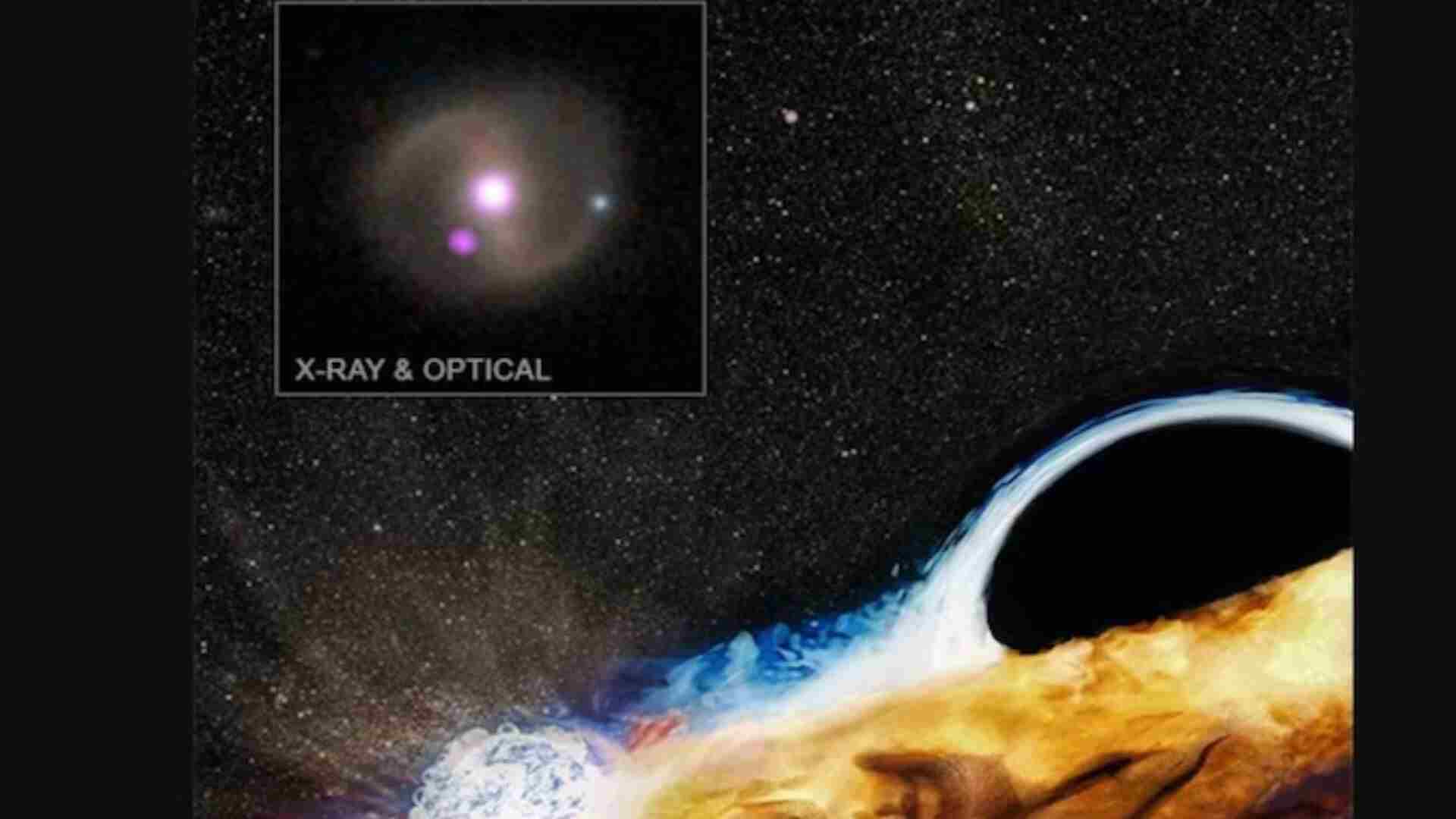Scientists have recently observed an incredible cosmic phenomenon where a large black hole is disrupting two celestial objects, one of which is a star. This discovery, made using NASA’s observatories like Chandra, NICER, and Hubble, along with India’s AstroSat, sheds light on how stellar debris behaves around supermassive black holes.
Background of the Discovery
In 2019, astronomers detected a star that had strayed too close to a supermassive black hole. The immense gravitational forces caused the star to be torn apart in an event known as a tidal disruption event (TDE). The remnants of this star formed an accretion disk, which is essentially a swirling mass of stellar material around the black hole. For several years, this disk remained stable, but recently, astronomers observed something unusual. The disk began to expand and interact with a second object, which could be another star or a smaller black hole that had been orbiting safely at a distance.
Now, this second object collides with the stellar debris disk every 48 hours, resulting in spectacular bursts of X-rays during each encounter. Matt Nicholl from Queen’s University Belfast explained, “Imagine a diver repeatedly entering a pool and causing a splash each time. The star here is like the diver, while the disk acts as the pool, creating a cosmic ‘splash’ of gas and X-rays.”
Connection to Quasi-Periodic Eruptions (QPEs)
Astronomers have extensively studied TDEs, where a single star is destroyed by a black hole in a single burst of energy. Recently, they have also noticed a puzzling phenomenon called quasi-periodic eruptions (QPEs). These are bright flashes of X-rays emitted from the centers of galaxies at regular intervals, which were not well understood until this discovery.
Dheeraj Pasham from the Massachusetts Institute of Technology (MIT) remarked, “There had been feverish speculation that these phenomena were connected, and now we’ve discovered the proof that they are. It’s like solving two cosmic mysteries at once.”
Details of the Cosmic Event AT2019qiz
The event, named AT2019qiz, was first detected in 2019 by the Zwicky Transient Facility at the Palomar Observatory. As the accretion disk grew and interacted with the second object, NASA’s Chandra Observatory gathered three sets of X-ray data over a few hours, providing solid evidence of the repeated eruptions.
The NICER instrument aboard the International Space Station monitored AT2019qiz and confirmed the eruptions occurred every 48 hours. Additional observations from NASA’s Swift observatory and India’s AstroSat telescope further validated these findings. AstroSat’s unique ability to observe both X-rays and ultraviolet (UV) light helped astronomers determine the size of the accretion disk and the regularity of the eruptions.
The Role of AstroSat in the Discovery
Gulab Dewangan, a co-author from the Inter-University Center for Astronomy & Astrophysics (IUCAA) in Pune, discussed AstroSat’s contributions. “India’s AstroSat mission provides unique UV/X-ray capability for studying such events,” he said, according to an ISRO report. “AstroSat’s Soft X-ray Telescope and the Ultraviolet Imaging Telescope (UVIT) both detected the source AT2019qiz, but the eruptions were only seen in X-rays. Future sensitive simultaneous X-ray and UV observations of similar eruptions will enable a deeper investigation into their nature.”
Implications of the Findings
Andrew Mummery from Oxford University highlighted the significance of this breakthrough. “This is a huge breakthrough in our understanding of the origin of these regular eruptions,” he stated. “We now realize we need to wait a few years for the eruptions to ‘turn on’ after a star has been torn apart because it takes some time for the disk to spread out far enough to encounter another star.”







